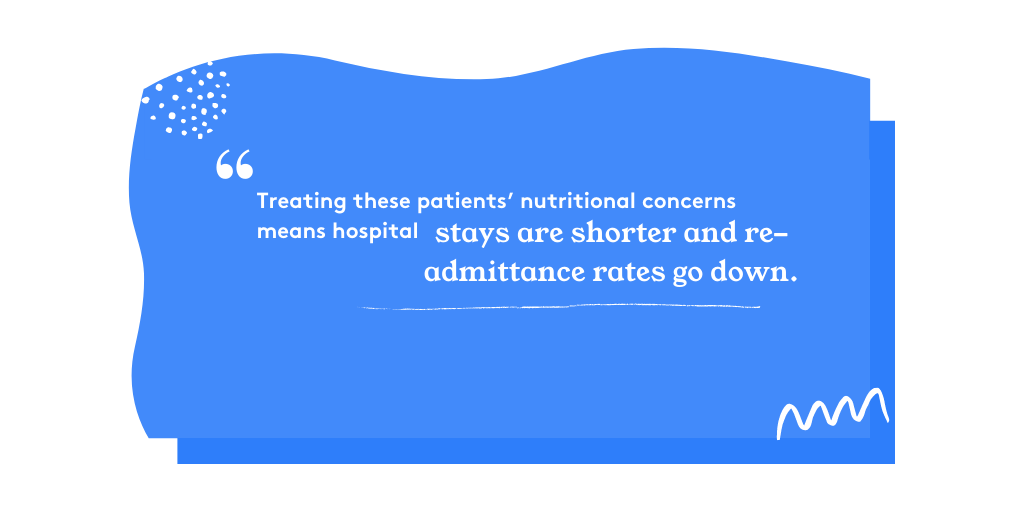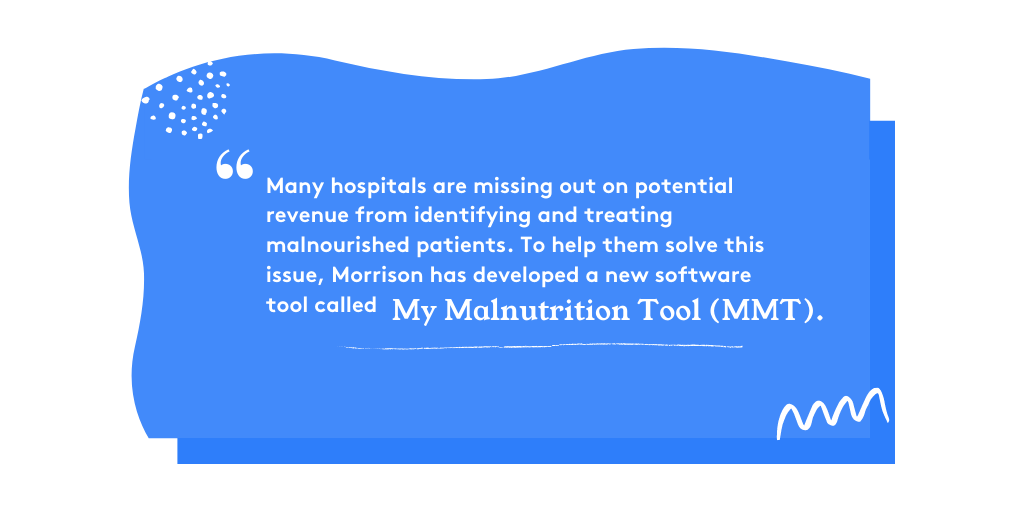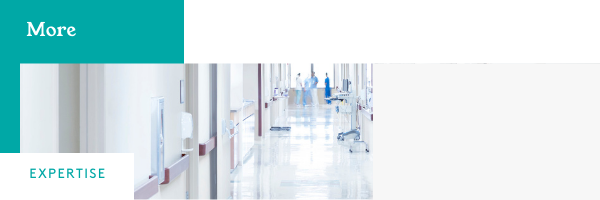Becoming Industry Leaders in Malnutrition Diagnosis & Treatment
By Maureen Janowski, Corporate Director, Malnutrition Programs

During a career spanning more than 30 years in foodservice and nutrition, I’ve helped many patients and residents suffering from malnutrition get back on track with medical nutrition therapy. So, I’m proud to be named our company’s first director of malnutrition programs, giving us a renewed focus and level of commitment to this health issue.
Improving patient care is my top priority. Older adults make up approximately 60% of all adult malnutrition in an acute care setting. Because I spent so much of my career working with older adults, they have a special place in my heart. Many of them live off their Social Security income and have limited financial resources, so buying fresh fruits, vegetables and good protein sources is difficult.
Others are frail, so it’s difficult for them to go shopping or prepare a variety of healthy meals. We find that many older adults coming to the hospital eat mostly carbohydrates and convenience foods that are easy to prepare and don’t spoil quickly. For these people, The Power of Food has real meaning – we can provide a real boost in their physical and emotional health.
The sooner these patients are identified at risk for malnutrition and seen by a dietitian, the sooner they will get the right nutritional care. And there are benefits for hospitals, too. Treating these patients’ nutritional concerns means hospital stays are shorter and re-admittance rates go down. In addition, when these patients are coded properly at discharge with a malnutrition diagnosis, the hospital often sees an increase in reimbursement by Medicare.

Our goal is to become the industry leader in treating and diagnosing malnutrition. Here’s how we’ll do that.
Our Team of Clinical Nutrition Managers. For starters, we have more than 450 clinical nutrition managers working at hundreds of hospitals across the country. We are counting on them to educate the medical staffs they interact with every day about malnutrition. Doctors and nurses have plenty of demands and responsibilities; our expertise can help them understand how better nutrition plays a role in healing their patients.
When a clinical nutrition manager starts learning about malnutrition, it can be overwhelming. Fortunately, we’ve developed many resources so these managers don’t have to start from scratch. Our malnutrition toolkit, step-by-step checklist and PowerPoint templates help the manager with this initiative. It does take some time for these efforts to pay off, but that’s ok. This journey is like running a marathon. We may not see all the benefits right away, but when we do, there will be a significant increase in the number of patients identified, diagnosed and treated.
Another focus will be to help our clinical dietitians get the training they need, such as conducting Nutrition Focused Physical Exams (NFPE). These exams can help identify malnutrition if the patient has two of six characteristics: such as weight loss, loss of muscle mass and loss of subcutaneous fat.
These tools – the education and training materials – will help our dietitians provide optimal patient care. And it will also challenge them to continue their efforts once a patient has left a hospital. By developing a nutritional care plan after their discharge, a patient can continue improving their nutritional status in a post-acute environment.
My Malnutrition Tool (MMT). Many hospitals are missing out on potential revenue from identifying and treating malnourished patients. To help them solve this issue, Morrison has developed a new software tool called My Malnutrition Tool (MMT).

MMT is used to track each patient identified by the dietitian as malnourished from the time the dietitian sees them until they are discharged. It takes the data and determines the difference in reimbursement due to the malnutrition code. The data also help us identify missed opportunities, such as when the dietitian identified malnutrition, but the patient wasn’t coded with malnutrition at discharge. This is an example where proper Medicare coding helps the hospital receive the reimbursement for the care provided.
The tool can also help us determine benchmarks to evaluate each facility compared to the benchmark and make recommendations. For its second phase, several new metrics will be added to MMT, including the ability to measure and report readmission rates, the actual length of stay compared to what Medicare expects the length of stay to be, and nutrition interventions used.
For example, we’ll look at what types of interventions, such as enteral nutrition or an oral nutrition supplement, are used most often with specific disease types and then compare our recommendations with the patients’ length of stay. This data will be helpful in treating future patients and provide a database we can share across Morrison and with our clients.
We also want to find out which departments in a hospital – such as cardiology or oncology, have higher levels of patients with malnutrition. These metrics will provide useful information that can be helpful in future patient treatment.
Every New Job Provides More Knowledge and Experience
The road leading to my new position has been a long one filled with a lot of variety and great experiences. I began working as a clinical dietitian and patient service manager, a director of dining services at a long-term care facility and as a regional dietitian. When the latter position was eliminated, I worked at the Cook County Jail in Chicago as a registered dietitian nutritionist for three years.
I was responsible for analyzing the menu for nutrient content and occasionally I met with a detainee to discuss their diet. Unfortunately, some people were placed on what was referred to as the “broken jaw” diet. All the food was served as a liquid so it could be sipped from a straw. There were many people on the broken jaw diet because of fighting inside the jail.
From there, I worked as a Regional Director of Operations and opening up seven long-term care facilities in Michigan and Illinois. More recently, I’ve been the Director of Nutrition Resources for Morrison Senior Dining (now called Morrison Living) and Division Director of Clinical Nutrition for Morrison Healthcare for five years before taking my current job.
I’ve benefitted from taking an open-minded and flexible approach to new opportunities. I worked in a variety of food service environments during college, including as a cook in a pizza restaurant, and the “salad prep” person and food service director at a nursing home. So, when I started working as a registered dietitian, I was quite interested in food service. But after I was married and had children, I wanted to work part-time, so working in clinical nutrition was the perfect answer.
I enjoyed working in clinical nutrition, especially with older adults. Working in clinical nutrition and food service during the past 20 years, I believe understanding each facility’s food service helps the clinical dietitian provide superior patient care.
If I had to give advice to my younger self, I would recommend getting involved in the Academy of Nutrition and Dietetics as a volunteer earlier in my career. I didn’t get involved with the Academy as a volunteer until about ten years ago and wish I had hadn’t waited so long. There is so much that can be learned from working with other RDs that work in different environments and different companies.
As I begin my new role, I’m hoping my decades of experience will enable us to provide a vital service that will improve the health of so many people who need our help. Our team has the expertise that can make a significant difference. I’m looking forward to the journey and helping demonstrate how Morrison can make a difference.
Learn more about Morrison Healthcare’s Malnutrition Program.





